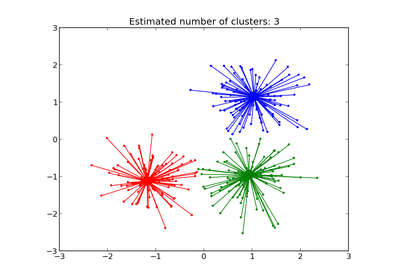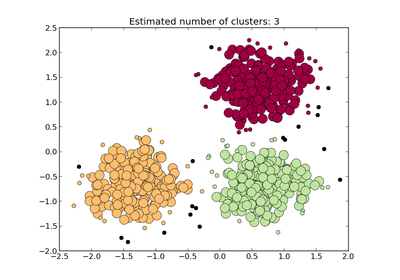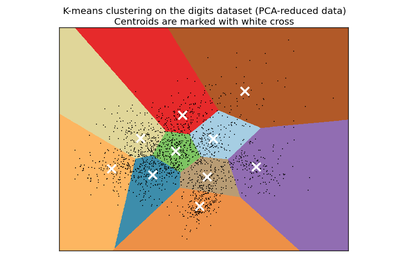sklearn.metrics.completeness_score¶
- sklearn.metrics.completeness_score(labels_true, labels_pred, max_n_classes=5000)[source]¶
Completeness metric of a cluster labeling given a ground truth
A clustering result satisfies completeness if all the data points that are members of a given class are elements of the same cluster.
This metric is independent of the absolute values of the labels: a permutation of the class or cluster label values won’t change the score value in any way.
This metric is not symmetric: switching label_true with label_pred will return the homogeneity_score which will be different in general.
Read more in the User Guide.
Parameters: labels_true : int array, shape = [n_samples]
ground truth class labels to be used as a reference
labels_pred : array, shape = [n_samples]
cluster labels to evaluate
max_n_classes: int, optional (default=5000) :
Maximal number of classes handled by the adjusted_rand_score metric. Setting it too high can lead to MemoryError or OS freeze
Returns: completeness: float :
score between 0.0 and 1.0. 1.0 stands for perfectly complete labeling
See also
References
[R167] Andrew Rosenberg and Julia Hirschberg, 2007. V-Measure: A conditional entropy-based external cluster evaluation measure Examples
Perfect labelings are complete:
>>> from sklearn.metrics.cluster import completeness_score >>> completeness_score([0, 0, 1, 1], [1, 1, 0, 0]) 1.0
Non-perfect labelings that assign all classes members to the same clusters are still complete:
>>> print(completeness_score([0, 0, 1, 1], [0, 0, 0, 0])) 1.0 >>> print(completeness_score([0, 1, 2, 3], [0, 0, 1, 1])) 1.0
If classes members are split across different clusters, the assignment cannot be complete:
>>> print(completeness_score([0, 0, 1, 1], [0, 1, 0, 1])) 0.0 >>> print(completeness_score([0, 0, 0, 0], [0, 1, 2, 3])) 0.0





